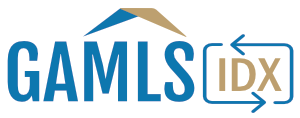What if you could get a mortgage that allowed you to skip part of your payment, or pay only the interest, or qualify with minimal documentation? What if your starting mortgage rate was as low as 1.95%, or about 1% lower than a standard 30-year fixed rate, with zero points? The COFI Adjustable Rate Mortgage offers all of this and more.
It sounds like a dream — but while the benefits are real, there’s a lot more to understand before jumping in. Loan officers often highlight the attractive features while glossing over the risks and long-term costs. Once you understand the full picture, you’ll see how this mortgage might be the right fit in certain situations — especially when fixed rates are rising.
How ARMs Work
Adjustable Rate Mortgages (ARMs) have a few key components:
- Adjustment period – how often the interest rate changes (monthly, semi-annually, or annually)
- Index – the benchmark interest rate the ARM is tied to
- Margin – the lender’s markup added to the index to determine your rate
- Rate caps – limits on how much your rate can rise over time
What Is the COFI Index?
The COFI ARM is based on the 11th District Cost of Funds, which tracks the average interest rate banks in California, Nevada, and Arizona pay on savings accounts. Because this index moves slowly and lags behind market trends, it tends to be more stable and predictable than other indexes like LIBOR or Treasury bills.
Margins on COFI loans typically range from 2.25% to 3%, and the loan often adjusts monthly. Although monthly adjustments sound risky, the COFI index has historically moved slowly — even in volatile markets, its annual change has rarely exceeded 1.6%.
Flexible Monthly Payments
One of the most attractive features of the COFI ARM is its payment flexibility. Each month, borrowers are given three (sometimes four) options:
- Full payment based on the current interest rate
- Interest-only payment
- Minimum payment, often calculated using a very low “teaser” rate (as low as 1.95%)
This flexibility allows borrowers to manage cash flow, especially in months when money is tight. But it comes with a catch: if you consistently make only the minimum payment, you’re not covering all the interest, and the unpaid portion is added to your loan balance — a process called negative amortization.
To prevent this from getting out of control, most COFI ARMs include:
- A 7.5% annual cap on how much your minimum payment can increase
- Re-amortization triggers — for example, if your loan balance reaches 110% of the original balance, your payments are recalculated to ensure full payoff by the end of the term
Limited Documentation and Easier Approval
COFI ARMs are popular among high-credit borrowers who may not want to provide full documentation. These loans often allow:
- No income verification
- No asset verification
- No source of down payment documentation
However, these perks typically require a 20–25% down payment, making them more suitable for borrowers with substantial savings or equity.
Sub-Prime Versions
Even borrowers with less-than-perfect credit may qualify for COFI ARMs, though with slightly higher margins and payments. While not ideal, it’s often still a better option than traditional sub-prime loans with inflated rates.
Who Is This Loan Best For?
The COFI ARM is favored by financially savvy buyers, especially:
- High-income borrowers who want flexibility or wish to invest their money elsewhere
- Self-employed or commission-based earners who experience income fluctuations
- Buyers who plan to stay in the home short-term and want to qualify for a larger mortgage
This loan can also be a smart strategy for skipping the “starter home” phase. By qualifying for a larger mortgage with a lower payment, you might be able to move straight into your long-term home and avoid paying closing costs twice — saving potentially tens of thousands of dollars.
Final Thoughts
The COFI ARM can be an excellent tool when used correctly, especially in a rising rate environment or for borrowers who value cash flow flexibility. Just be aware of how negative amortization works, and monitor your loan balance. Most COFI lenders even offer a fourth payment option — one that lets you pay down your mortgage faster if you choose.
Like any loan, it’s not one-size-fits-all. But for the right buyer, the COFI ARM is a powerful, strategic option.




